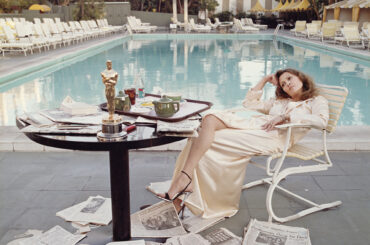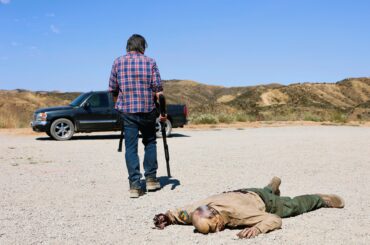
The New Yorker is one of the most celebrated and iconic magazines that has been around for over 100 years. In recent times it has featured exclusive documentaries on its website to great acclaim and viewership, showcasing short films that tackle pressing issues that may not make the main pages of the magazine but are just as vital.
Lost in My Mind is the latest film by Charles Frank about Manny Padilla, a teenager struggling with the debilitating symptoms of Obsessive Compulsive Behavior (OCD) and his life-changing experience with Exposure and Response Prevention (E.R.P.).
Frank is an accomplished director and a founding partner of Voyager, a production company that produces films of purpose. Frank’s work has been featured in The Atlantic, The Huffington Post, and with his latest short, The New Yorker. Frank spoke about his newest film with Immersive via Zoom.
[Note: the conversation has been edited for clarity and length.]
What inspired this project? How did you come across this young man with this unique but not uncommon problem?
I was diagnosed with OCD when I was nine years old, and fortunately, my mom recognized something was going on. She brought me to the doctor who thought I had OCD and referred me to a psychologist at a young age. I got Exposure and Response Prevention (E.R.P.), and I was very fortunate.
Years later, I met young people getting the same treatment I got years ago and I asked parents of children in the program if they would be interested in being involved in this film that would help advocate and show a realistic depiction of OCD.
Manny Padilla and his family responded right away. We talked on the phone and I found out they discovered that Manny had OCD because of a documentary that was made years ago about another intensive treatment program. They were very much in this place of wanting to share their story in hopes that it could do the same for someone else.
The therapy doesn’t necessarily cure it, but makes it more workable, right?
It’s kind of the gold standard treatment for OCD. However, there are not many providers that offer it, and it’s not widely known. It’s called Exposure with Response Prevention. The basic idea is that when you expose yourself to these feared thoughts, and you don’t pair it with compulsive behavior, you just sit with a feared thought or a feared event or object or whatever it might be. You allow yourself to feel the anxiety, but without having a compulsive behavior attached to it. You can sit with it and sort of let it subside slowly. You do this over time and you’re consistent with it, then those triggers become less triggering, they become more manageable.
How did you approach and gain trust to film this family’s home?
I think it was helpful for them to realize that I was very familiar with what Manny was going through. I had personal experience with OCD, so I think that immediately gave a sense of comfort that I wasn’t trying to exploit this situation or sensationalize his experience in some way. I think that when we caught Manny, it was at a point where he was in the midst of this intensive treatment program and he was making incredible progress.
The actual process of making the film was an exposure for Manny. He had to, as somebody afraid of sort of alternate dimensions and creating other versions of himself, being filmed and creating this time capsule of his life kind of is an exposure. Interacting with the cameras is an exposure, because he doesn’t like interacting with electronics or things that could be a portal to another potential dimension. I spoke with his treatment team to see if anything we were doing was interfering with his treatment, and they said no. They were encouraging of the process of making the film as part of his treatment.
How did the connection with the New Yorker happen?
I just submitted it. They have this wonderful documentary series they’ve been doing for a long time. I think they’ve won some Oscars in that series, or at the very least, they’ve been contenders and just have a successful program. I submitted the film and then eventually they got back and said they wanted to feature it, and that was that.
What has the reaction been like?
I have only seen overwhelmingly positive comments. The New Yorker posted it on their main Instagram feed, just a little sizzle for it. And in the first couple of days, half a million people watched that. There were hundreds and hundreds of comments of people just incredibly supportive or people sharing their own experience with OCD or a family member with OCD and just expressing gratitude for a film that depicts it in a really honest and more realistic way. It’s just been extremely positive and the Padilla family has just been so kind and just so thrilled about the film.
How is Manny doing now?
We finished the film in 2022. He’s not in intensive treatment and he’s still, as far as I know, dealing with OCD. It’s not a cure. There is no cure. It’s an ongoing life struggle. I know that he’s had harder periods and periods that are better. He has tools that are helpful now and they come in handy, but of course, moments flare up that no matter how good you are at using these tools, they can still get in the way of everyday function.
What are you working on next?
I’m working on a documentary about a driving school in Manhattan. The idea is they don’t do any classroom time with students. They just take first-time drivers that have never driven a car and they put ’em behind the wheel and they are expected to just start driving in Manhattan. It’s just supposed to be a very lighthearted, fun film. It’s not dangerous. It’s very controlled. But the instructor we’re following, Omar, is this very philosophical guy. He finds ways to sort of tie in his life philosophies with driving and instructing. For some of the students, because they live in New York, they’re 30, 40, 50 years old and never driven a car, so they’re getting their license later in life.
Lost in My Mind can be seen at The New Yorker.





![‘Shōgun’ Cinematographer Sam McCurdy Breaks Down Episodes 9 & 10 [Part 1]](../wp-content/uploads/2024/07/hiro-370x245.jpeg)
